Published Jul 2, 2023
Star Trek's One-Hit Wonder Alien Species, Ranked
We may have only seen them once, but they made the most of their limited time.
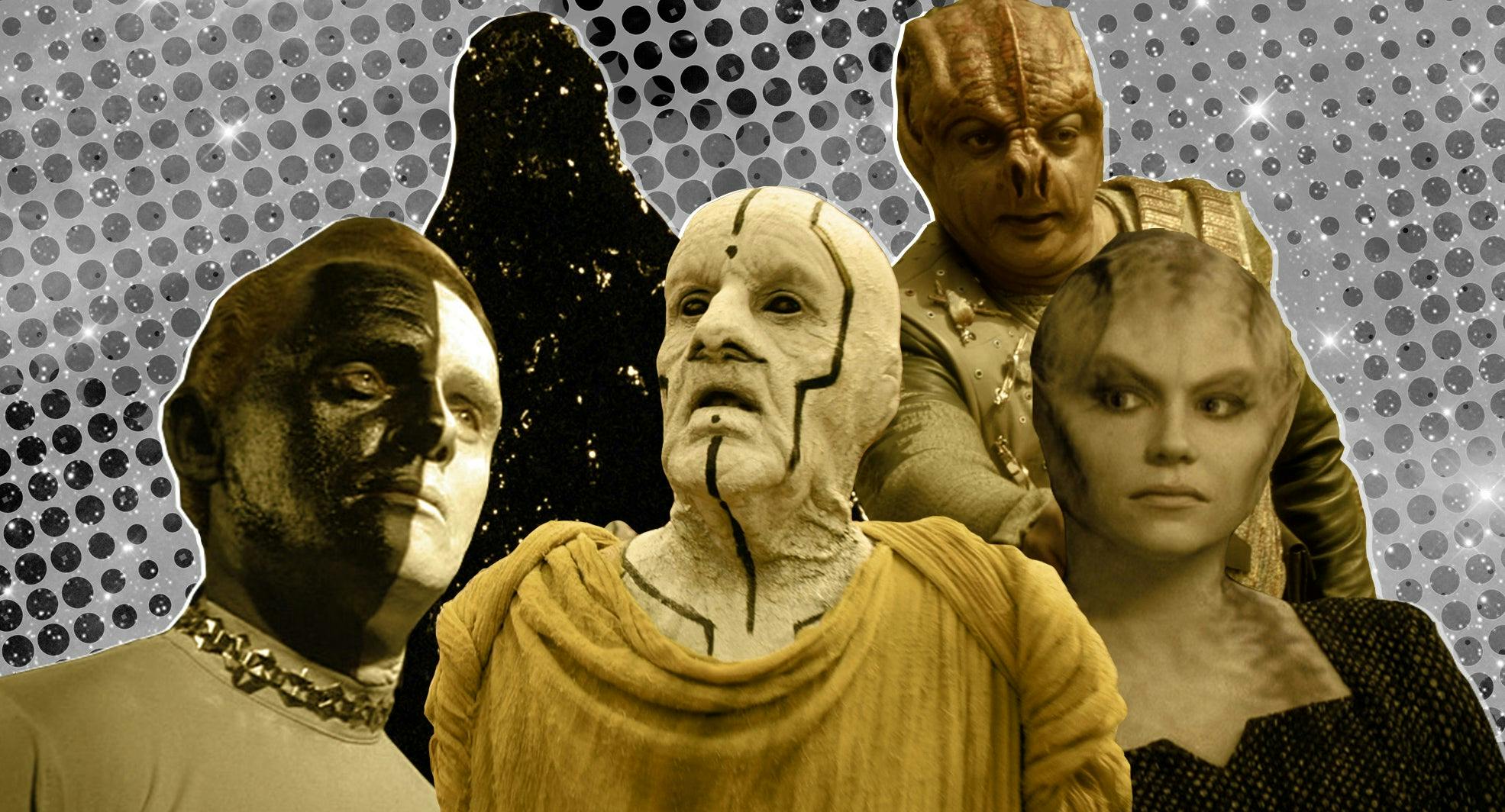
StarTrek.com
When it comes to Star Trek aliens, the Klingons are as ubiquitous as the Beatles, while the Ferengi are more of “Top 40” choice, the Andorians are like an indie band, and the Romulans are whatever type of music you hate the most.
But what about the one-hit wonder alien races — the species that only appeared in one episode (or movie), but who we still think about all the time? Some looked unique, others communicated or reproduced differently, and many taught us important lessons about our own humanity. Here are some of our favorite one-hit wonder species.
10. The Nibirans
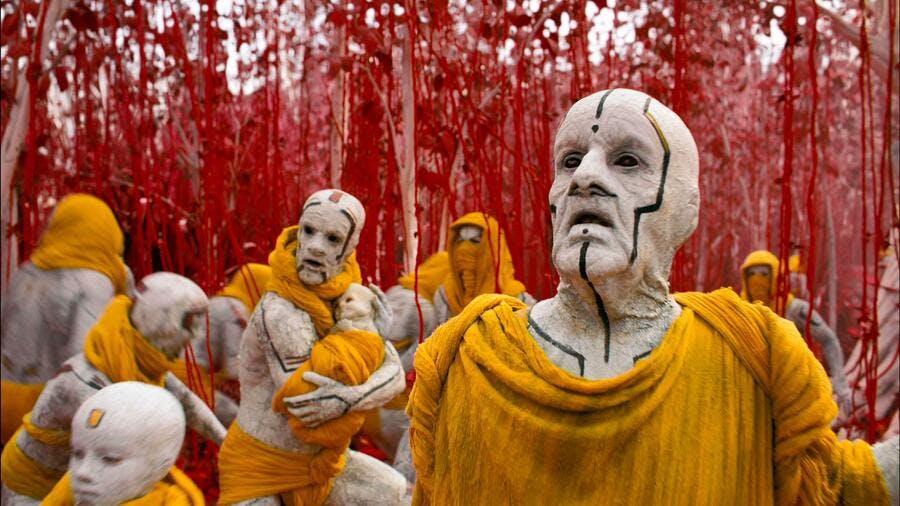
StarTrek.com
What happens when you disobey the Prime Directive? The Nibirans — aka, the species seen chasing down Kirk and McCoy in the opening of Star Trek Into Darkness — give us a possible answer. After getting a good look at the Enterprise, the primitive race sets aside their sacred scroll to draw pictures of the starship instead. Kirk gets demoted for “playing god” and you have to wonder how things changed on the planet Nibiru after that. Was an Enterprise shrine built inside the volcano Spock kept from blowing up?
9. The Kradin
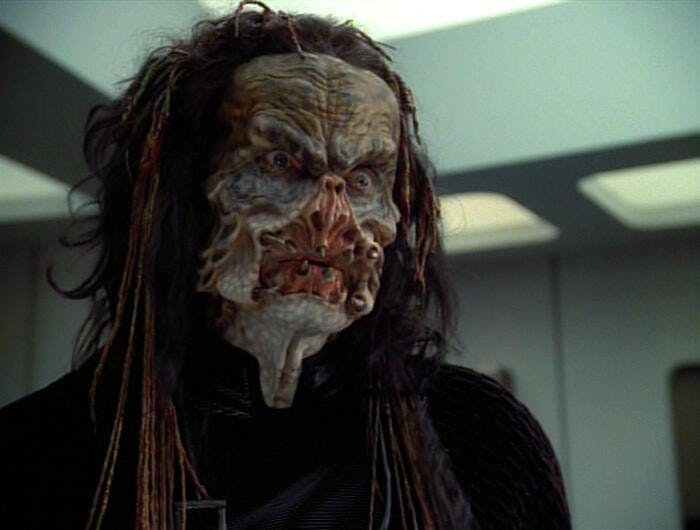
StarTrek.com
When Chakotay’s shuttlecraft crash-lands on an unknown planet in Star Trek: Voyager's "Nemesis," he’s taken in by a group of earnest, plucky rebels fighting an unjust war against a murderous race called the Kradin. Chakotay sees the monstrous-looking Kradin abducting elderly villagers, harassing children, and killing his comrades — but it turns out it’s all a holosimulation designed to recruit fighters from the crews of passing ships. The Kradin are actually the good guys! But even after finding out the truth, Chakotay discovers that he still doesn’t want to be in the same room as one. “I wish it was as easy to stop hating as it is to start,” he tells Janeway.
8. Tosk
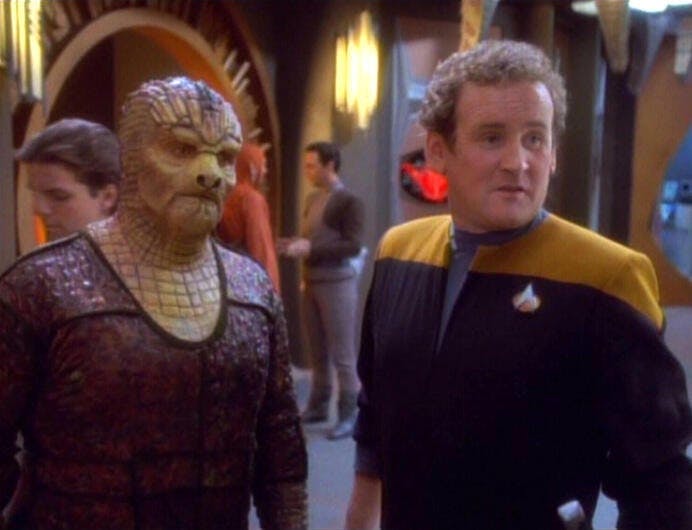
StarTrek.com
When dealing with a shy, nervous race, send in the Irish guy. That seems to be Sisko’s thinking when he asks Chief O’Brien to befriend an alien whose ship he’s fixing in Star Trek: Deep Space Nine's "Captive Pursuit." O’Brien suspects he’s on the run, but he and the rest of the crew can’t get him to tell them what he’s running from. The riddle is solved when a hunter shows up, looking for his “prey.” Turns out, his species breeds Tosk to hunt them down, yet consider them sacred. The Tosk in their custody refuses asylum to avoid dishonor, so O’Brien helps him escape to live another day trying to evade the hunters.
7. The Tamarians
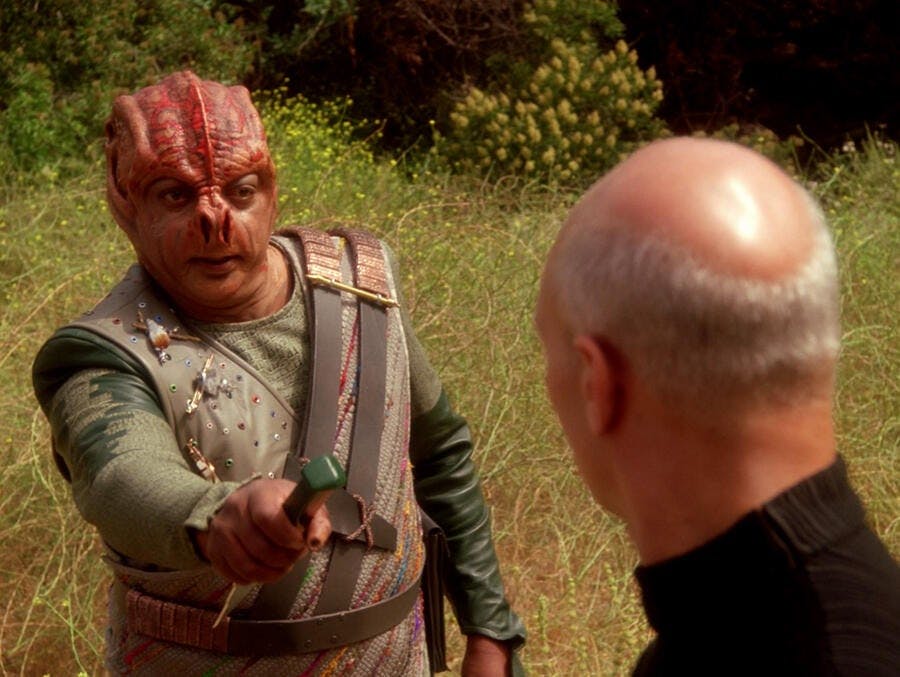
StarTrek.com
Shaka, when the walls fell!
If these words mean anything to you, you’re a fan of the memorable Star Trek: The Next Generation episode “Darmok,” which finds Picard stranded on a planet with a starship captain from a race known as the Children of Tama. Although his fellow maroon-ee seems relatively friendly, they can’t communicate, despite Picard’s universal translator. But literally no one is worried that Picard might not live up to the challenge. He figures out that the Tamarians speak in allegory, and learns what all the important ones mean in less time than you can say “Darmok and Jalad on the ocean.”
6. The Horta
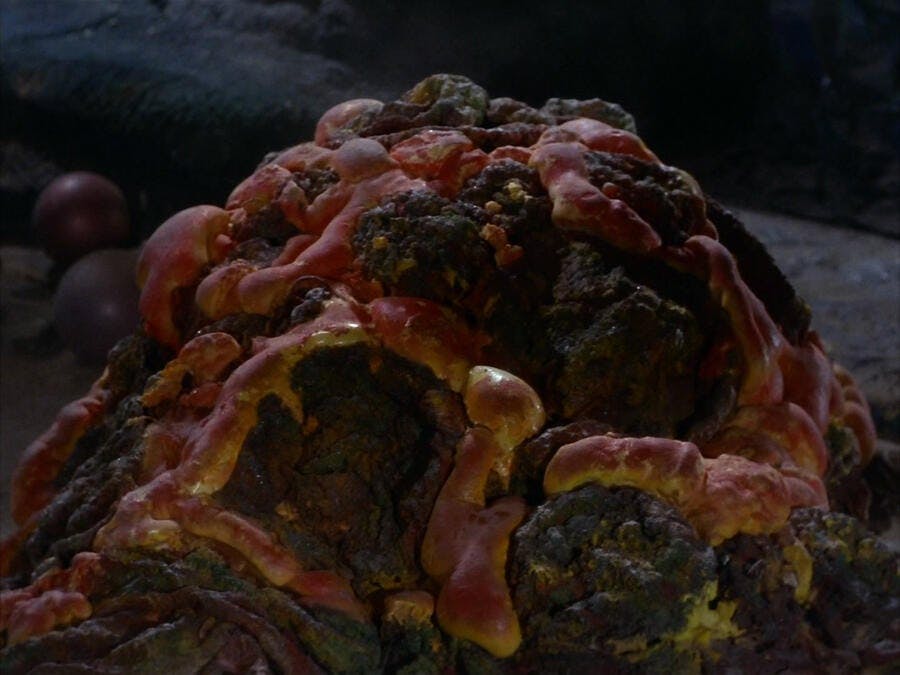
StarTrek.com
The first silicon-based lifeform to be introduced in the Star Trek universe, the Horta might prompt you to utter, “I’m a doctor, not a bricklayer!" That is, of course, if you’re Dr. McCoy and have been sent to nurse the rocky-looking creature in The Original Series episode, "The Devil in the Dark." Spock, on the other hand, performs a mind-meld and finds he quite likes the alien, who admires his ears. IRL, the unique-looking creature was the brainchild of Janos Prohaska, who originally created it for The Outer Limits, where it appears as a giant germ. According to Inside Star Trek: The Real Story, he added some fringe and veins to transform it into a miner’s worst nightmare on Star Trek.
5. The Kobali
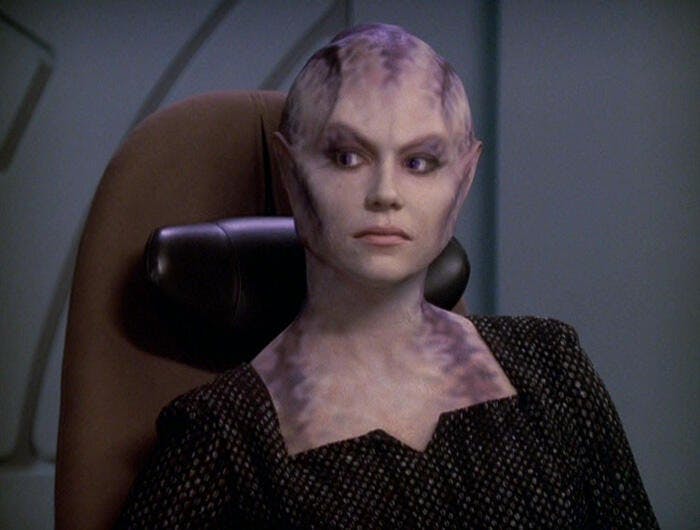
StarTrek.com
How would a humanoid species reproduce, if not sexually? An interesting answer to this question is given in the Voyager episode “Ashes to Ashes,” which features the Kobali, a species that salvages dead bodies and implants them with a genetic pathogen. The pathogen causes their DNA to change and their bodies to reanimate. In the process, their memories are wiped — except for the few who still remember who they were the first time they were alive. One such Kobali is Jhet'leya, aka Ensign Lyndsay Ballard, who died on an away mission. When she shows up at Voyager in her now-altered form, more goes wrong than she expects — and that doesn’t even include hooking up with Harry Kim.
4. The Gormagander
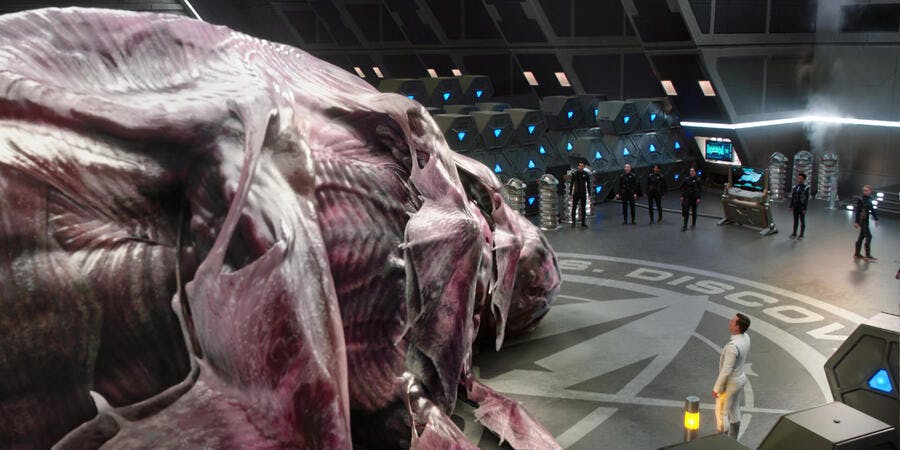
StarTrek.com
If you love marine life, you can’t help but squee a little when the Gormagander makes his appearance in Star Trek: Discovery's "Magic to Make the Sanest Man Go Mad." Also known as a space whale, these endangered creatures just float around space, chilling. When the Discovery crew encounters one, it seems injured; they beam it aboard to take it to a wildlife sanctuary.
A good idea until they find out that the Gormagander is actually experiencing its own personal Jonah-and-the-whale situation. Hiding inside is the infamous Harvey Mudd, who’s later brought up on charges for “penetrating a space whale” (among many other things) in The Original Series.
3. The Flying Parasites
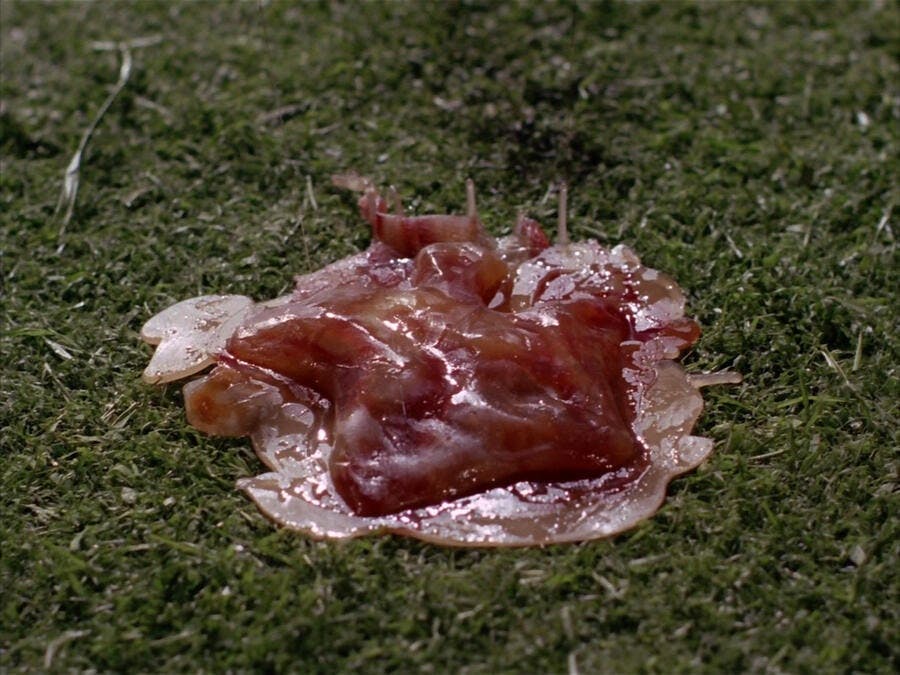
StarTrek.com
They were never really given a name, but don’t let that fool you — you do not want to run into the flying parasites that the Enterprise encounters on Deneva in "Operation: Annihilate!"
They sting, they know how to fly, they’re resistant to phasers — oh, and they made Kirk’s brother Sam go insane, then murdered him. These nightmare-inducing aliens, which look sort of like rubber placentas, are still no match for Spock, however. Although one latches onto his back, he overcomes the pain and the brainwashing, kidnaps one of the parasites to study, then has McCoy test out Kirk’s theory as to how to kill it. The procedure successfully releases him from the creature’s grasp, and even blindness can’t keep Spock down — thanks to his inner eyelids, the side effect is only temporary.
2. The Cheron
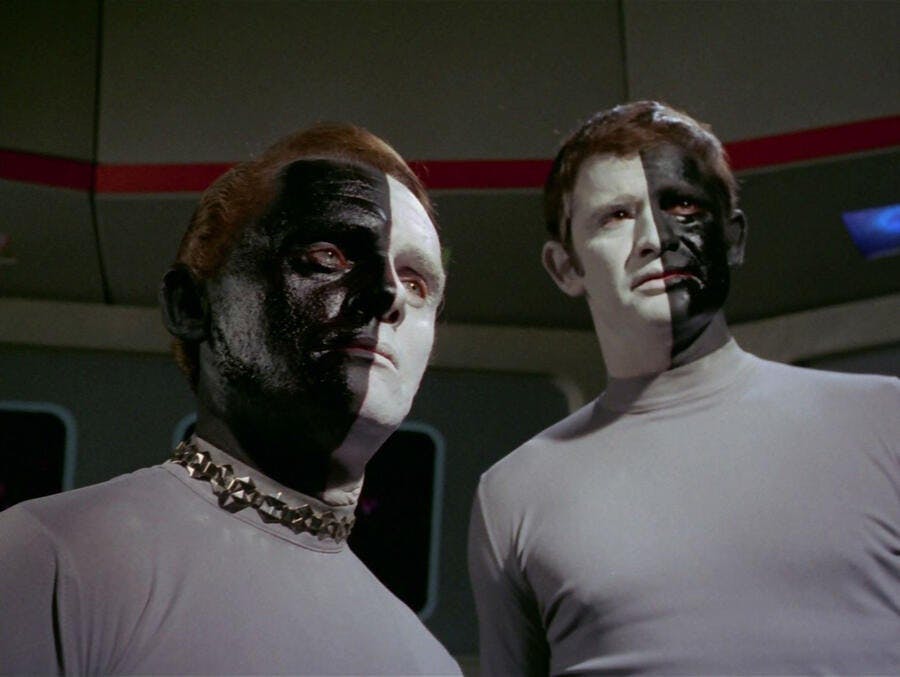
StarTrek.com
When the Enterprise encounters a comatose member of a new alien species from a planet that’s recently been destroyed, the fact that he has some organs Dr. McCoy has never seen is hardly the most notable thing about him. His skin is dark black on one side, and bright white on the other, leading McCoy and crew to decide he’s probably a mutant. But when they pick up a second survivor named Bele, he too has the unique pigmentation. There’s one problem — the two men hate each other.
In an unexpected twist, Bele (played by Frank Goshin, two years after portraying The Riddler in Batman), explains to Kirk that the reason is obvious — he’s black on his right side, while the other Cheron is white on his right side. The episode "Let That Be Your Last Battlefield" is such a powerful allegory for racism that it stuck with a generation of fans who had only seen it on television one time.
1. Armus
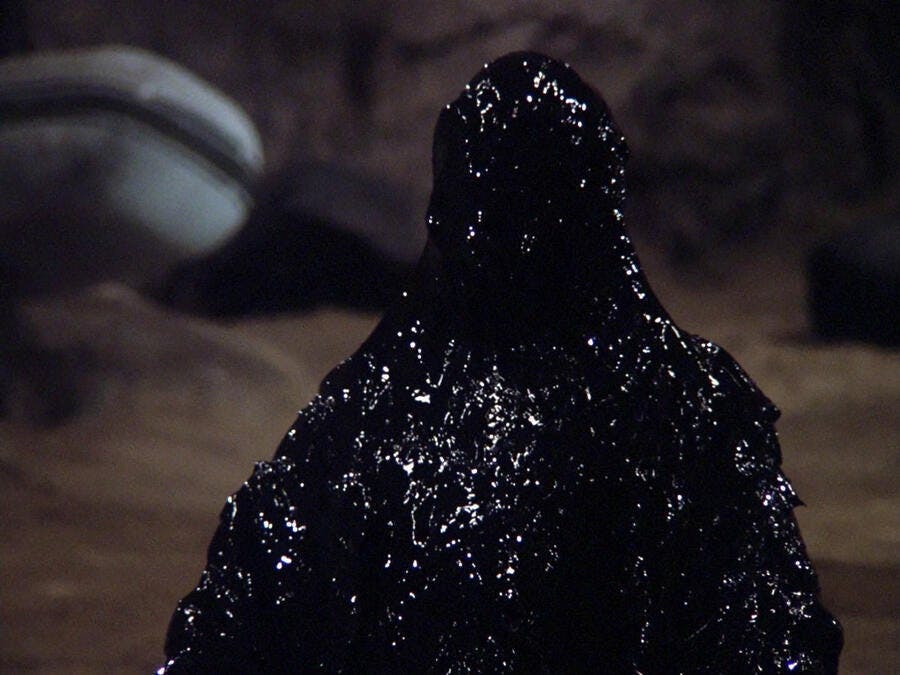
StarTrek.com
What does pure evil look like? If you said “a sentient pool of tar,” from "Skin of Evil," then you know why The Next Generation’s Armus is number one on this list.
Literally a discarded second skin of everything “evil and negative within” from another race who abandoned it on a desolate planet, Armus displays his sinister intentions immediately by senselessly murdering Tasha Yar. Picard is ultimately able to distract him with his dazzling intellect (and some poetry) long enough to get the rest of his crew off the surface, but the act of killing Yar has repercussions that reverberate throughout the rest of the series.
This article was originally published on August 12, 2019.





